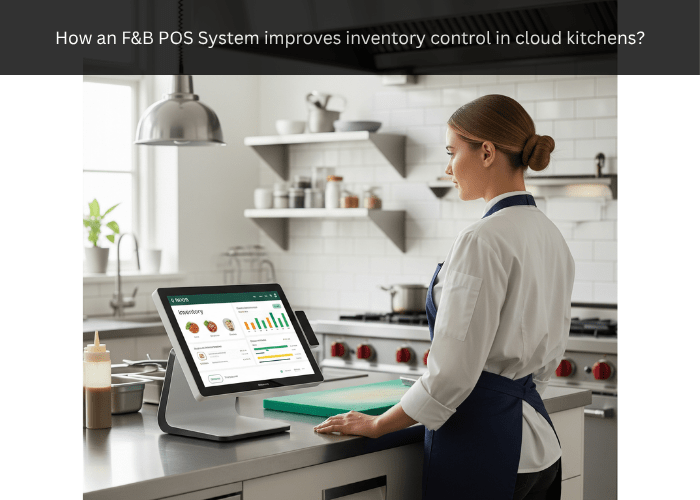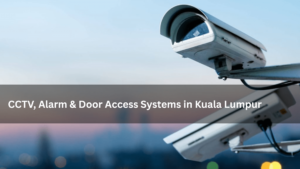How an F&B POS System Improves Inventory Control with Real-Time Ingredient Tracking
Cloud kitchens operate at high speed and volume, and managing ingredients manually often leads to errors, wastage, or stockouts. A smart F&B POS System offers real-time inventory tracking down to each ingredient used in a recipe.
For example, when a burger is sold, the system automatically deducts the bun, patty, lettuce, and sauces from the stock. This level of detail not only improves order accuracy but also allows you to monitor what’s selling and what ingredients are depleting quickly.
By using this feature, kitchen managers get updated counts instantly, can reorder timely, and avoid running out of popular items during peak delivery hours. This ensures uninterrupted service and higher customer satisfaction.
How an F&B POS System Improves Inventory Control by Reducing Human Error
Manual inventory logging—especially in fast-paced cloud kitchens—is prone to mistakes. Using an F&B POS System drastically reduces errors associated with handwritten records, delayed entries, or forgetfulness.
Since all menu items are mapped to specific ingredients in the system, each sale automatically updates inventory levels. Staff no longer have to guess stock levels or manually adjust numbers, which cuts down inconsistencies and fraud.
Furthermore, the system keeps a digital audit trail of every transaction, helping you identify and correct discrepancies. This level of automation enhances accountability and provides data transparency—a must-have in modern kitchen operations.
How an F&B POS System Improves Inventory Control with Automated Stock Alerts and Reordering
One standout feature of a cloud-based F&B POS System is automated low-stock alerts and auto-reordering functions. When an ingredient hits a predefined threshold, the system notifies you or automatically sends a purchase order to your preferred supplier.
This ensures that critical ingredients never run out and vendors are aligned with real-time demand. In cloud kitchens, where supply chain efficiency is key, this automation saves time and reduces emergency purchase costs.
Additionally, the system can track price fluctuations, suggest alternate vendors, and prioritize items that need immediate attention. This proactive inventory approach helps businesses scale without manual oversight.
How an F&B POS System Improves Inventory Control Across Multiple Cloud Kitchen Brands
Many cloud kitchens operate multiple virtual brands from a single kitchen. A powerful F&B POS System enables shared inventory across all brands while maintaining individual menus.
For instance, chicken stock might be used in Brand A’s soup and Brand B’s rice bowl. The POS system intelligently tracks these deductions per brand, allowing centralized monitoring while providing breakdowns for each virtual restaurant.
This avoids over-purchasing, improves kitchen space management, and gives brand-level insights into food cost. It also streamlines procurement processes, reduces duplication, and ensures every gram of ingredient is accounted for—regardless of which brand used it.
How an F&B POS System Improves Inventory Control with Batch and Expiry Tracking
Spoilage is a hidden cost in cloud kitchens. An advanced F&B POS System supports batch tracking, expiration monitoring, and FIFO (First-In-First-Out) logic.
It enables kitchen managers to:
Tag incoming stock with batch numbers and expiry dates
Prioritize older stock usage first
Alert staff before items expire
Report on wastage and expired items automatically
This not only ensures food safety compliance but also protects profitability by reducing waste. Batch traceability also supports audits and quality control, especially if you’re working with multiple suppliers and high inventory turnover.
How an F&B POS System Improves Inventory Control Through Centralized Reporting and Analytics
Beyond basic tracking, the real power of a modern F&B POS System lies in its ability to generate in-depth analytics:
Ingredient usage trends
Seasonal demand forecasts
Best-selling items and their cost breakdown
Vendor delivery timelines and consistency
Weekly and monthly stock variance
These insights help managers plan procurement more accurately, identify slow-moving items, and refine menu engineering strategies. It allows operators to switch suppliers, reduce SKUs, or adjust pricing based on actual consumption data.
In Malaysia, where cost pressures and competition are high, these reports can be the difference between profit and loss for a cloud kitchen.
How an F&B POS System Improves Inventory Control by Integrating with Accounting and Supply Chain Tools
The most efficient cloud kitchens in 2025 will use an F&B POS System that integrates seamlessly with accounting platforms like Xero, QuickBooks, or ERP systems. This syncs purchasing data with financial records, ensuring inventory purchases match expense tracking and cash flow reporting.
It also allows supply chain integration—automating order generation, invoice matching, and payment scheduling. This reduces manual paperwork and improves traceability.
Such integrations help cloud kitchens move beyond day-to-day tracking into strategic planning and financial accuracy, giving them the edge to scale or franchise more easily.
Conclusion: Why Cloud Kitchens Need a Smart F&B POS System in 2025
Cloud kitchens thrive on speed, precision, and scalability. Managing multiple menus, high-volume orders, and shared kitchens demands more than basic stock tracking—it requires intelligent automation.
A specialized F&B POS System designed for cloud kitchens:
Tracks inventory in real time
Prevents errors and loss
Supports multiple virtual brands
Alerts on low stock and expiry
Reduces food waste
Centralizes vendor and purchase data
Integrates with accounting and supply chain systems
As the cloud kitchen model continues to grow in Malaysia and globally, investing in a powerful inventory-focused POS solution is not optional—it’s essential.








